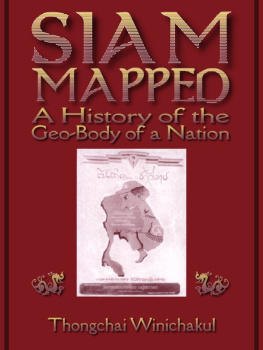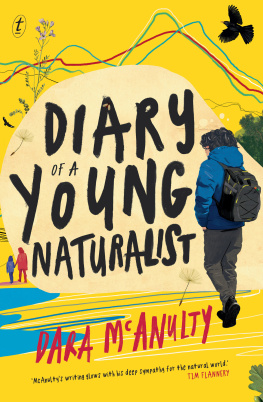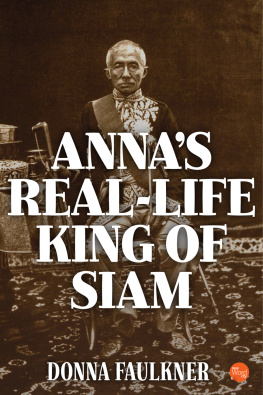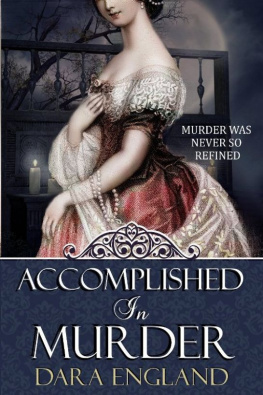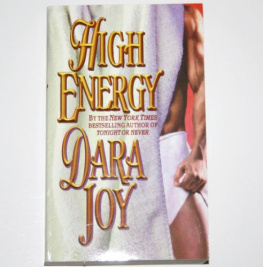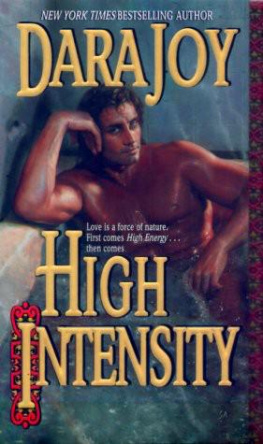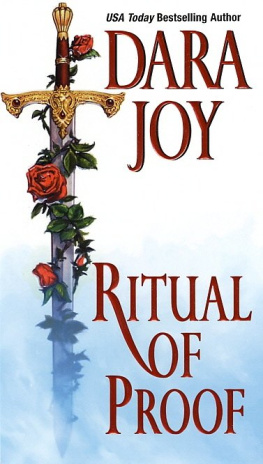Woman between Two Kingdoms
Woman between Two Kingdoms
Dara Rasami and the Making of Modern Thailand
Leslie Castro-Woodhouse
Southeast Asia Program Publications
an imprint of Cornell University Press
Ithaca and London
Southeast Asia Program Publications Editorial Board
Mahinder Kingra
(ex officio)
Thak Chaloemtiarana
Chiara Formichi
Tamara Loos
Andrew Willford
Segments of chapter 4 have been excerpted from A Very Modern Matron: Phra Rachaya Dara Rasami as Promoter and Preserver of Lan Na Culture in Early Twentieth-Century Siam, in Women, Gender and Art in Asia, c. 15001900 , ed. Melia Belli Bose (London: Ashgate, 2016), pp. 91121. Copyright 2016.
Copyright 2020 by Cornell University
The text of this book is licensed under a Creative Commons Attribution-NonCommercial-NoDerivatives 4.0 International License: https://creativecommons.org/licenses/by-nc-nd/4.0/ . To use this book, or parts of this book, in any way not covered by the license, please contact Cornell University Press, Sage House, 512 East State Street, Ithaca, New York 14850. Visit our website at cornellpress.cornell.edu .
First published 2020 by Cornell University Press
Library of Congress Cataloging-in-Publication Data
Names: Castro-Woodhouse, Leslie, 1968 author.
Title: Woman between two kingdoms: Dara Rasami and the making of modern Thailand / Leslie Castro-Woodhouse.
Description: Ithaca [New York]: Cornell University Press, 2020. | Includes bibliographical references and index.
Identifiers: LCCN 2020029372 (print) | LCCN 2020029373 (ebook) | ISBN 9781501755507 (paperback) | ISBN 9781501755514 (epub) | ISBN 9781501755521 (pdf)
Subjects: LCSH: Sex rolePolitical aspectsThailandHistory19th century. | Sex rolePolitical aspectsThailandHistory20th century. | PolygynyThailandHistory19th century. | PolygynyThailandHistory20th century. | EthnicityThailandHistory19th century. | EthnicityThailandHistory20th century.
Classification: LCC HQ1075.5.T5 C37 2020 (print) | LCC HQ1075.5.T5 (ebook) | DDC 305.309593dc23
LC record available at https://lccn.loc.gov/2020029372
LC ebook record available at https://lccn.loc.gov/2020029373
This book is published as part of the Sustainable History Monograph Pilot. With the generous support of the Andrew W. Mellon Foundation, the Pilot uses cutting-edge publishing technology to produce open access digital editions of high-quality, peer-reviewed monographs from leading university presses. Free digital editions can be downloaded from: Books at JSTOR, EBSCO, Hathi Trust, Internet Archive, OAPEN, Project MUSE, and many other open repositories.
While the digital edition is free to download, read, and share, the book is under copyright and covered by the following Creative Commons License: CC BY-NC-ND 4.0. Please consult www.creativecommons.org if you have questions about your rights to reuse the material in this book.
When you cite the book, please include the following URL for its Digital Object Identifier (DOI):https://doi.org/https://doi.org/10.7298/pq1f-t958
We are eager to learn more about how you discovered this title and how you are using it. We hope you will spend a few minutes answering a couple of questions at this url:
https://www.longleafservices.org/shmp-survey/
More information about the Sustainable History Monograph Pilot can be found at https://www.longleafservices.org .
This book is a product of more than a decade of research, thinking, and writing , which would not have been possible without the support of a host of people and institutions . There are a number of people to whom I owe special thanks for their collegial and moral support over the years . First and foremost , I would like to thank my former academic advisers , Peter Zinoman and Penny Edwards , without whose advice , feedback , and support I might never have successfully navigated the circuitous process that ultimately allowed me to complete the research that formed the basis of this book .
I also owe a debt of deep gratitude to a host of colleagues around the world who were instrumental in helping me move this project from dissertation to book . Firstly I owe thanks to Katherine Bowie for her unflagging support of my research, as well as Thongchai Winichakul for both his personal support of my work and for connecting me with Warunee Osatharom , my longtime mentor at Thammasat Universitys Thai Khadi Institute, to whom I also owe a great debt of gratitude . Among my Thai colleagues , I particularly appreciate the support and feedback Ive received from Wongsak and Chanida na Chiang Mai, Ratana (Jaeng) Pakdeekul, Plai-Auw Thongsuwat , Aroonrut Wichienkieow , Ratanaporn Sethakul , Phichet Tanthinamchai , Jirachat Santayot , and Kreuk Akornchinaret of Chiang Mai. From Bangkok (and beyond), I have Ake (Thweep) Rittinapakorn, Lupt Utama , Supatra Chowchuvech , Pat Chiraprawati, and Narisa Chakrabongse to thank for their kind assistance, encouragement, and collegiality .
Among my Western colleagues whose friendship and feedback have also been invaluable to my work : Taylor Easum, Rebecca Hall, Julia Cassaniti, Bonnie Brereton, Kanjana Hubik Thepboriruk , Joel Sawat Selway , Andrew Turton, Volker Grabowsky , and Hillary Disch . My deepest thanks for sharing so generously from your own experience and research on Lan Na/northern Thai culture and history .
Lastly , I thank the friends and family who have provided such tremendous emotional and moral support over the lengthy time it took to turn this research into a readable bookthe last five years of which saw me through a career change, several moves, a separation and divorce, and a remarriage . I am especially grateful for the friendship and support of my uncle John and aunt Carol Woodhouse and my uncle David and aunt Ann Cunningham, as well as close friends Laurie Margot Ross, Marady Hill, Robin Sackett-Smith, and Karri Donahue, without whom I could not have survived these past few challenging years. Lastly, my deepest thanks and gratitude go to my husband Edo, without whom I would truly be adrift. Your love and support have been invaluablethank you from the bottom of my heart .
Woman between Two Kingdoms
T HE 1880s WERE A remarkable decade, witnessing the passing away of an old world and the birth of a new one. The time needed to move people and communications across long distances shrunk rapidly with the advent of the Suez Canal, the steam ship, the telephone, and transoceanic telegraph lines. European nations raced to expand their empires around the globe, from the British Raj in India to French Indochina and Dutch Indonesia. This competition imparted a particular urgency to the wild rumor that swept Bangkok in 1882: that Queen Victoria planned to adopt a young princess named Dara Rasami from Lan Na, a small kingdom roughly three hundred miles north of Bangkok, one of Siams principal tributary states. The threat of such a move greatly alarmed Siams King Chulalongkorn, as the annexation of Siams old enemy and neighbor Burma was well underway by the British. And they were not the only European threat: the French were also pressing in on Siams eastern peripheries from Cambodia and Laos. If such an adoption took place, it would expand Englands colonial reach uncomfortably close to Siams doorstep.



